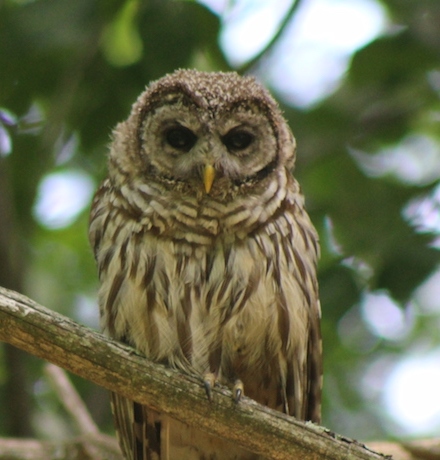The swan song of my first car. A drive to the French Riviera.
Yes, we did visit Saint Tropez, but Brigit Bardot avoided us…
There is an American monthly news magazine for enthusiasts of British cars called “British Marque”. Recently, there have been articles describing the adventures of a couple that have been driving their old Lotus Elans to far flung parts of the globe. There has also been an article about the adventure of a couple of guys that drove a Mini to Mongolia, it was a recent (by my standards anyway) first generation Mini, but no doubt it had the stalwart BMC A series engine. It prompted me to take a look at some of the scans of my slides from the 1970s. My first car was a maroon 1964 Ford Anglia. I bought it with 36,000 miles in 1970 at about the time I passed my driving test for cars.
The Anglia was one of the most popular cars in the UK during the early 1960s. It had the 1000 cc OHV 105E series engine and 4-speeds (no synchro on 1st though). It came on the scene in the late 1950s to replace an earlier model with the same name and was a big success until it was replaced by the first-generation Escort in 1968-ish. Like many cars of the time it was a terrible “rot box” (or had “metal moths” as my mechanic cousin used to say); mine was no exception and at 10 years old the usual brown mark had appeared on the front wing where Ford had omitted to protect the body from water being thrown up from the front wheels into the car’s structure. I had also been forced to have reinforcements installed over the Macpherson struts where rust had start to weaken the front suspension. If you don’t know what these cars look like you might have noticed the one in the Harry Potter movies flying off to somewhere or other.
Around this time, I had been starting my computer career at Univac Division of Sperry Rand (if you can remember them then you are getting old) in their central London office. I shared an apartment with Alex Aronson; a French-speaking Jewish person with Anglo-Belgian parentage that had been a refugee from unrest in Algeria and had grown up in Marseille with British nationality! Alex’s story is the kind of thing that would fill a long book with stories about the OAS and the resistance to French decolonialization in the early 1960s. He is still a good friend and still lives in England, but now his English is perfect. Anyway, after I left London in 1973 to join a computer development group in Manchester Alex and I plotted to get together again for a trip to visit his family. His mother and younger sister still lived the south of France. Our trip was planned for 2-weeks in the summer of 1974.
The predecessor of the Anglia was a 3-speed side-valve (flat-head in America) engined vehicle that was the basis of many models with a generic name 100E. Alex had a 15-year old example of one of these that he had purchased for less than ₤20. It was held together by glass-fiber patchwork and had just scraped through its MOT (aka inspection in American). Of our 2 cars, my Anglia was by far the most reliable even with its old age and rust.
Of course, in those pre-EU days there were some requirements for Continental driving that were alien to us British. In order to use a RHD car on the right hand side of the road one had to install some headlight deflectors. These were yellow tinted plastic and were held in place by some elastic arrangement (I forget the details). Also required was a “green card”. This was not the green card of US immigration fame, but a certificate of insurance that allowed the car to be driven in Europe. Another legal necessity in France was a reflecting triangle to be erected as a warning to other drivers in case of emergency. (I still have mine and carry it in my current car). Finally, Alex needed to be a named driver on my insurance. I was a bit concerned about breakdowns so my mechanic cousin supplied me with a bag of useful parts in case of problems. In addition, we took out the reciprocal coverage option with the Automobile Association for roadside help in Continental Europe. While doing paperwork I obtained an international driving license. I don’t think it was necessary, but we were going to visit France, Italy and Switzerland and one should be careful.
Our plan was for me to drive to Alex’s home in London after work on a Friday evening then we would head immediately to Folkstone on the south coast and get the night car ferry to Boulogne. Campgrounds were common in France and family camping trips were extremely popular so we took my tent. Mostly we would cook for ourselves, but would also use restaurants and cafes. We would not do any advance planning, but stop for the night wherever we ended up. Alex’s perfect French was going to be very useful.
The 90-minute night ferry was always a tough experience leaving England at about 1:00 am and arriving in France at about 3:30 (there is a 1-hour time difference). Then one had to drive off the boat, through customs, etc. and get away from Boulogne as quickly as possible. The town was known then for its smell of fish; in fact, after the trip a friend of mine’s first response when I mentioned where we had been was “Does it still stink?”! On that first day, we were hardly awake, but made it to the town of Beauvais via Abbeville where we had stopped for refreshment and a break.
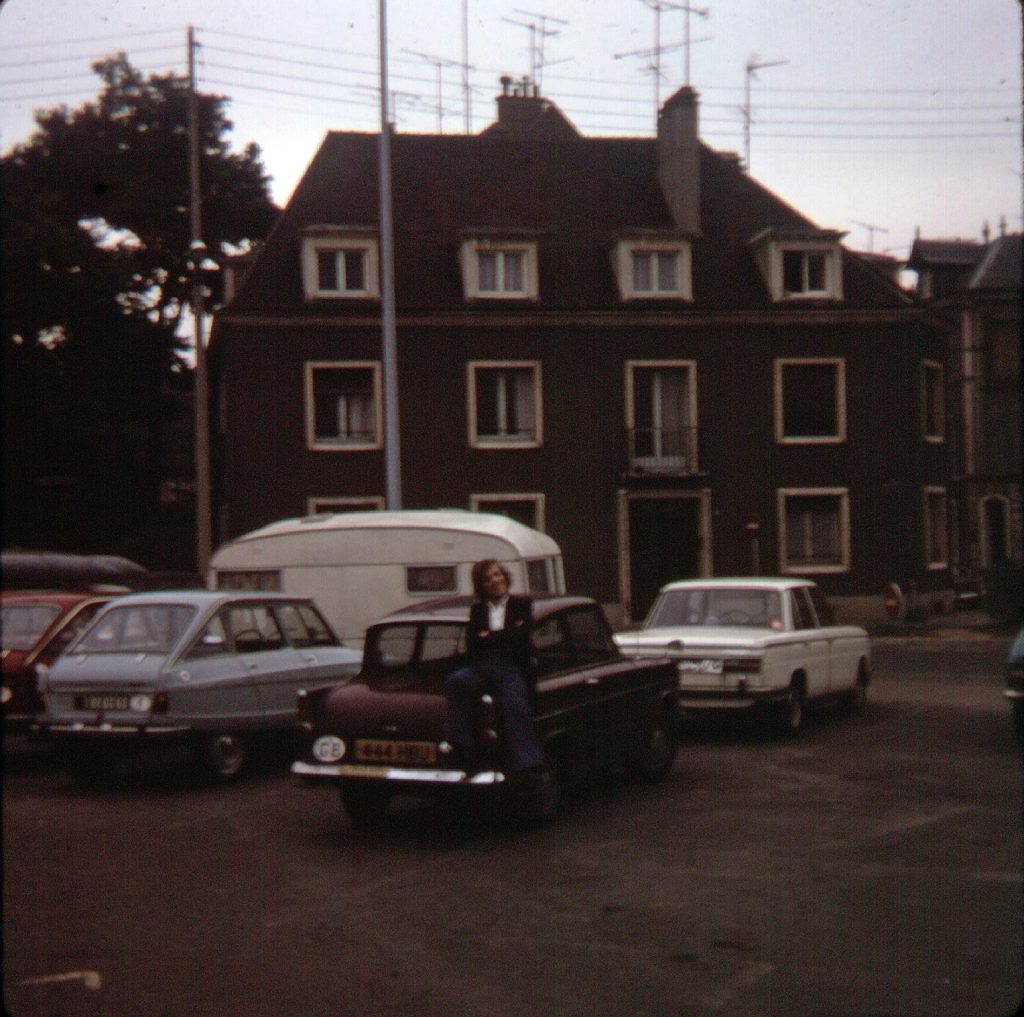
Our route was chosen to avoid busy traffic and stayed away from the Paris area and at a place I cannot remember, but west of the city we camped for that first night. It could have been near Beauvais because the next day saw us doing some sightseeing in Chartres. I remember noting that we were not too far from Le Mans. Somewhere on this day I made my only accidental wander over to the left-hand side of the road, fortunately there were no other vehicles around – Alex kept me under control.
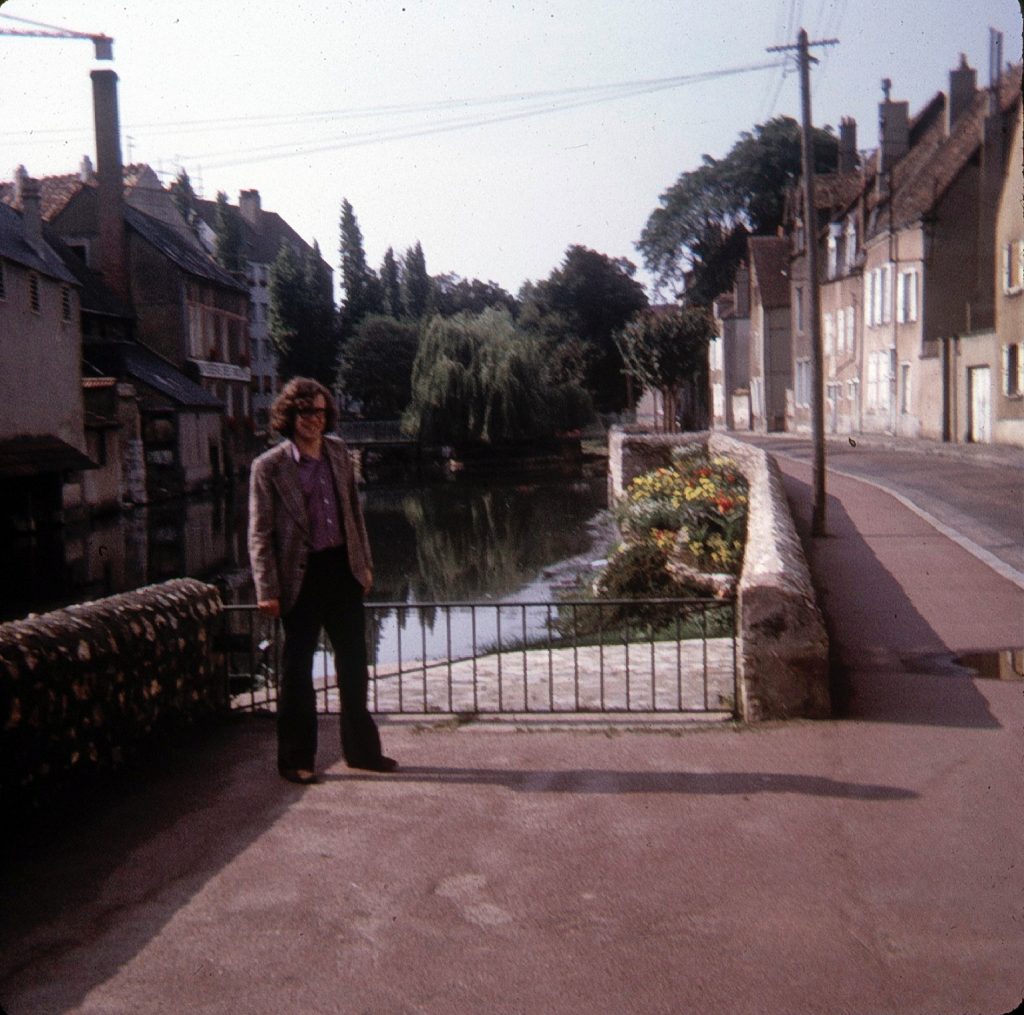
From here we headed south to the Loire Valley and Chambord then on south to Nevers where we spent a night. The French autoroutes were in their infancy in the 1970s although several had been constructed. Cheap as we were our plan was to avoid them and the subsequent tolls. Also, there was always a sort of romantic air about National 7; the old road from Paris to Italy. British students used to hitchhike along it and in France it was known derisively as Route des Vacances (The Holiday Route). Of course, I wanted to follow it for a while. It’s largely been upgraded or replaced by the A77 now, but then it was our best choice. This road had been the subject of several songs. The one I knew had been recorded by John Renborn (folk fans of the Pentangle might have heard of him).
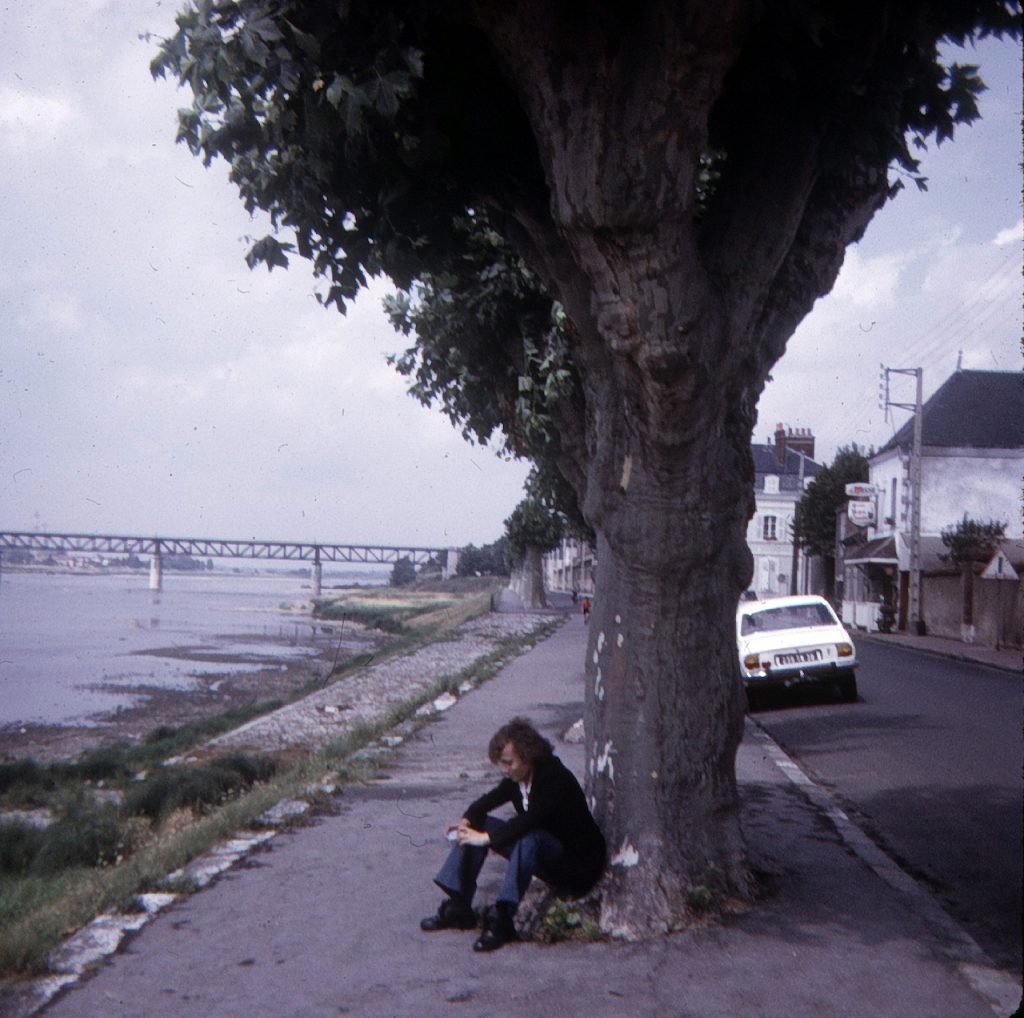
The car was behaving superbly and our journey took us on to Marseille via Saint Étienne (a must for Alex because he was a big fan of their soccer team) and the Rhône valley stopping at Montelimar (yes that’s where the candy comes from), Avignon and on to France’s second city, Marseille.
Alex’s mother lived in a small apartment on Rue Paradis; a very busy street with a Ricard drinks factory nearby. Her landlady would not allow her to have visitors so we were forced to find a campground. Alex suggested a place called Carry-le-Rouet, very close to the Camargue (the Rhône delta). We stayed there for about 4 nights and commuted in to the city making a regular trek past the big new port and seeing the large cargo ships. Marseille still had its reputation for drug smuggling, the Mafia, etc. and it was very seedy in parts, but the Vieux Port was (and still is) trendy. It had strong North African influences including very spicy food. Alex was a big fan of some hot sausages called “merguez”; lamb based and eaten like hotdogs.
There are tourist attractions in the region and plenty of opportunities for sightseeing. There is Château d’If just outside the harbor; famous because it’s the location of the prison for the novel “The Count of Monte Cristo” by Alexander Dumas. One day we drove out to Arles (Van Gogh fans will know of it). On another day we visited Alex’s sister Rosa, an English student at the University in Aix en Provence.
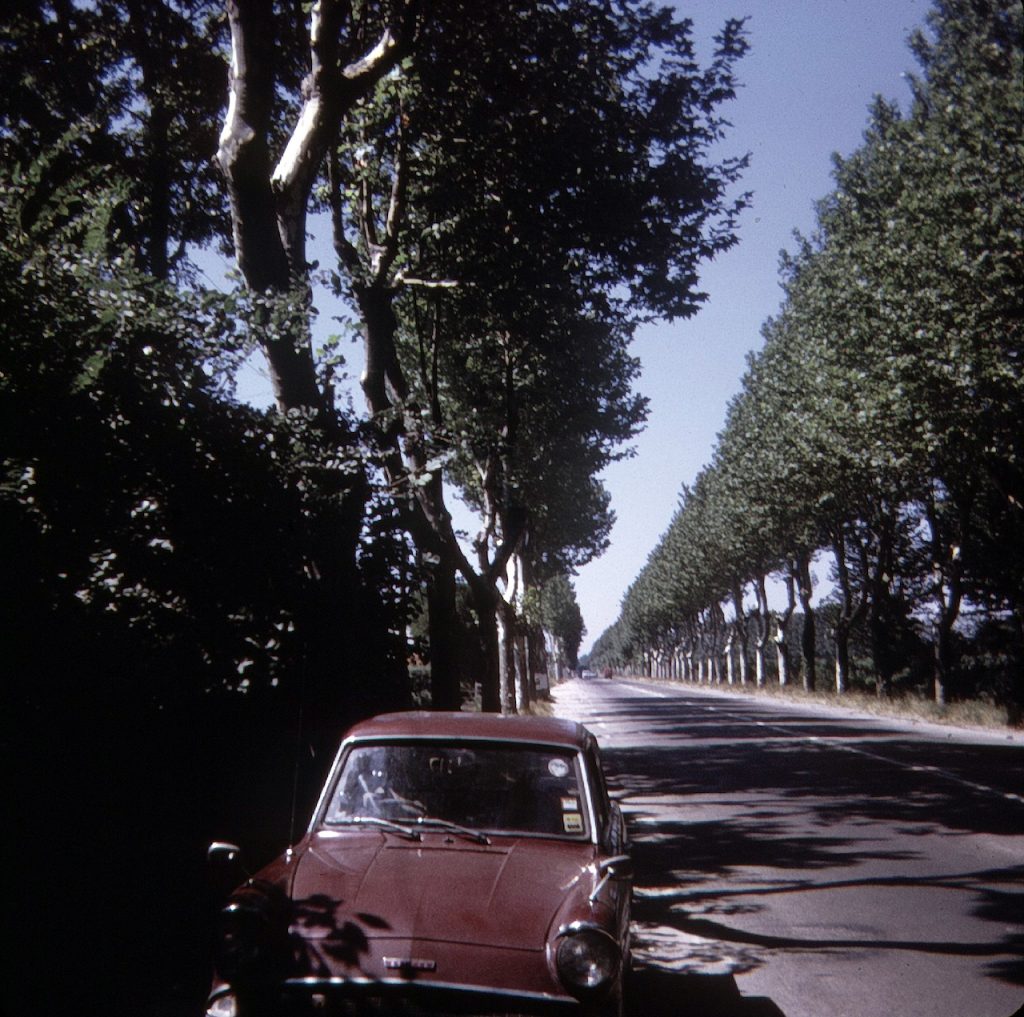
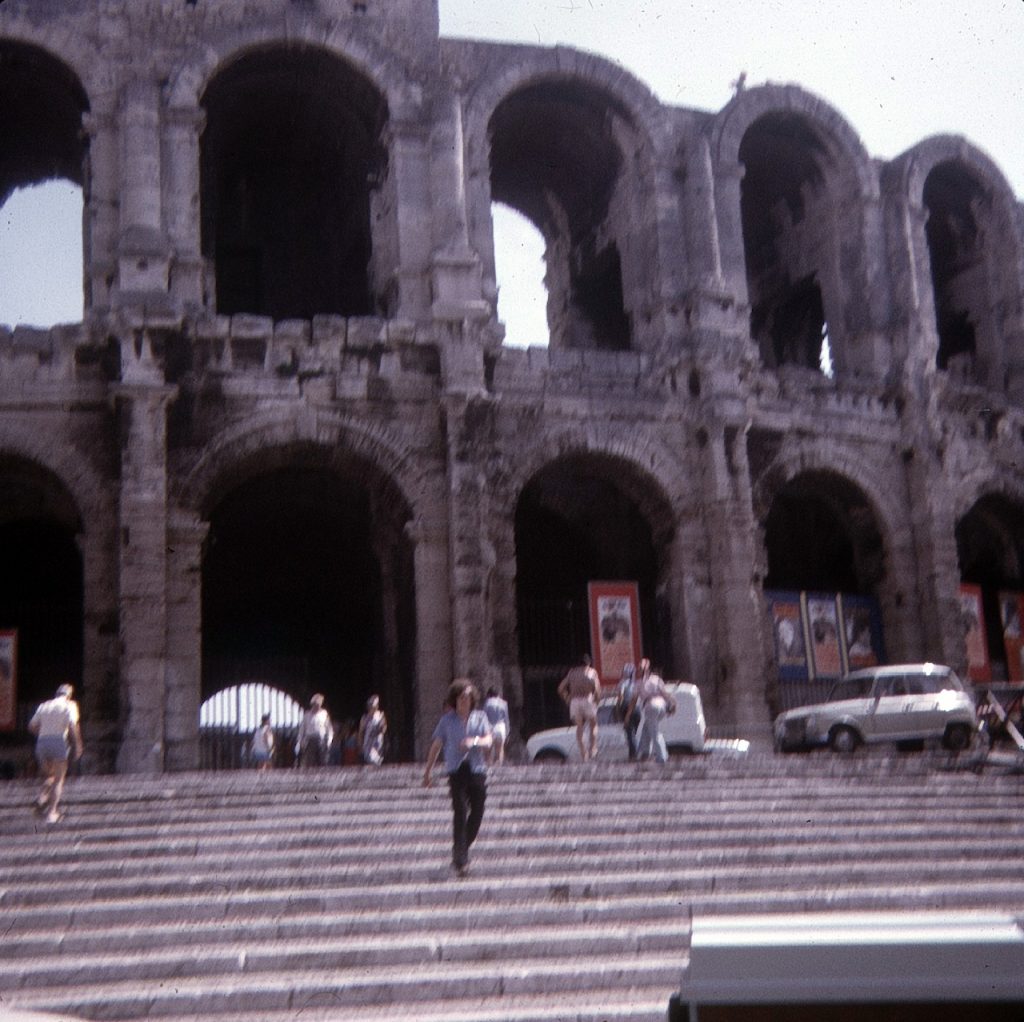
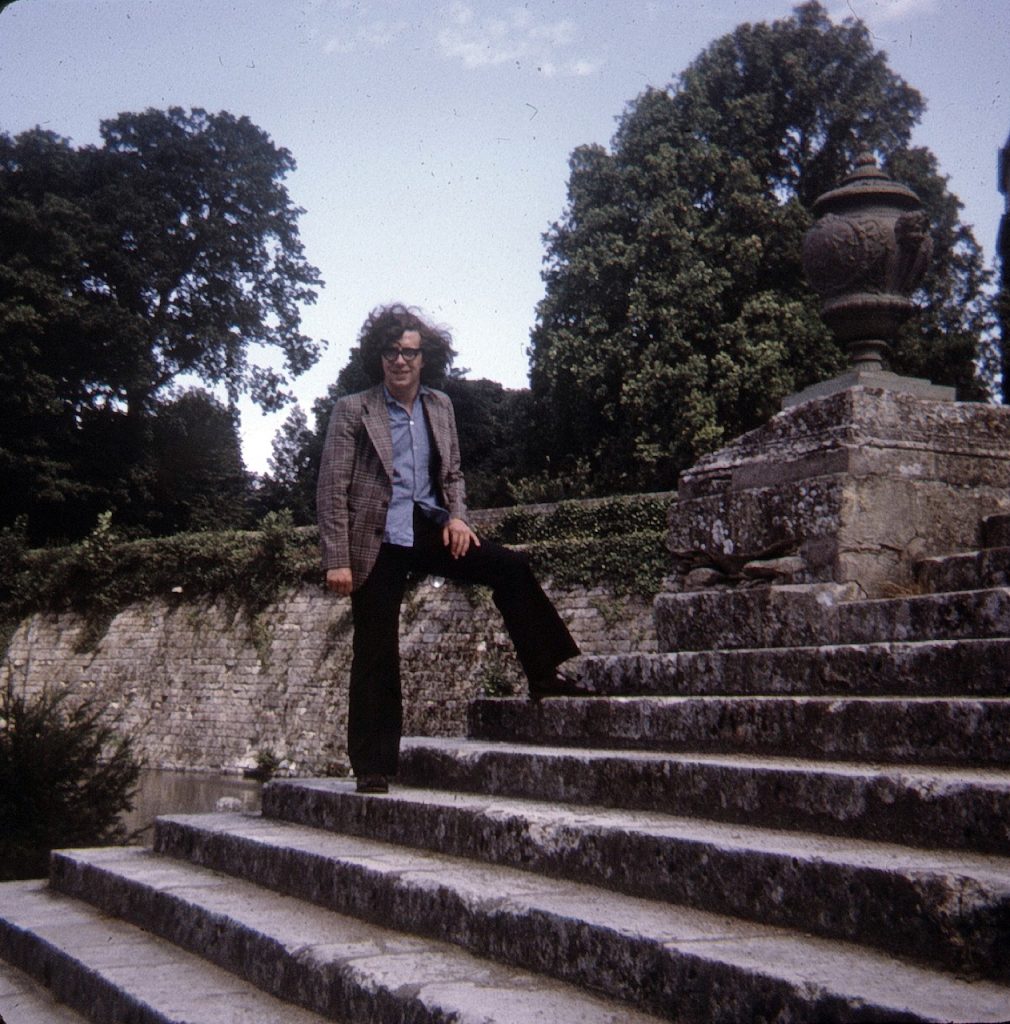
A feature of this part of France is the Mistral which is a nonstop wind that blows from the Alps down the Rhône Valley to the hot climate in the Mediterranean. In Carry-le-Rouet the Mistral was very annoying, so we eventually took our sleeping bags to Alex’s mother’s apartment and illegally slept on the floor in the sitting room for a night or two. The Summer is hot in the South of France of course and in 1974 nobody had air conditioning, especially a working class home in Marseille, so the house was very dark because the window shutters were always closed, even in an old cold stone building like this was.
I learned was that even in 1974 Marseille’s town water was suspicious so everybody drank bottled water (or wine!). This was alien to me having been brought up in the UK which had strict standards for water, even London water with its high chalk content was safe to drink. I have never been able to bring myself to drink bottled water; it seems to be such a pointless waste of resources, but even now while living with the UK’s high standards, Alex will only use stuff that comes that way. Of course, his early years were spent in Algiers, which would tainted anybody’s view of what comes out of the tap I’m sure. Have you noticed that the fancy brands of bottled water are French? We did not drink wine; Alex introduced me to that staple of old Frenchmen; Pastis – the aniseed flavoured drink that turns white when water is added.
Then we were off eastwards in the loyal Ford Anglia towards the Riviera and on to see Alex’s older sister, Sandra, and family in Crans sur Sierre in Switzerland via Italy.
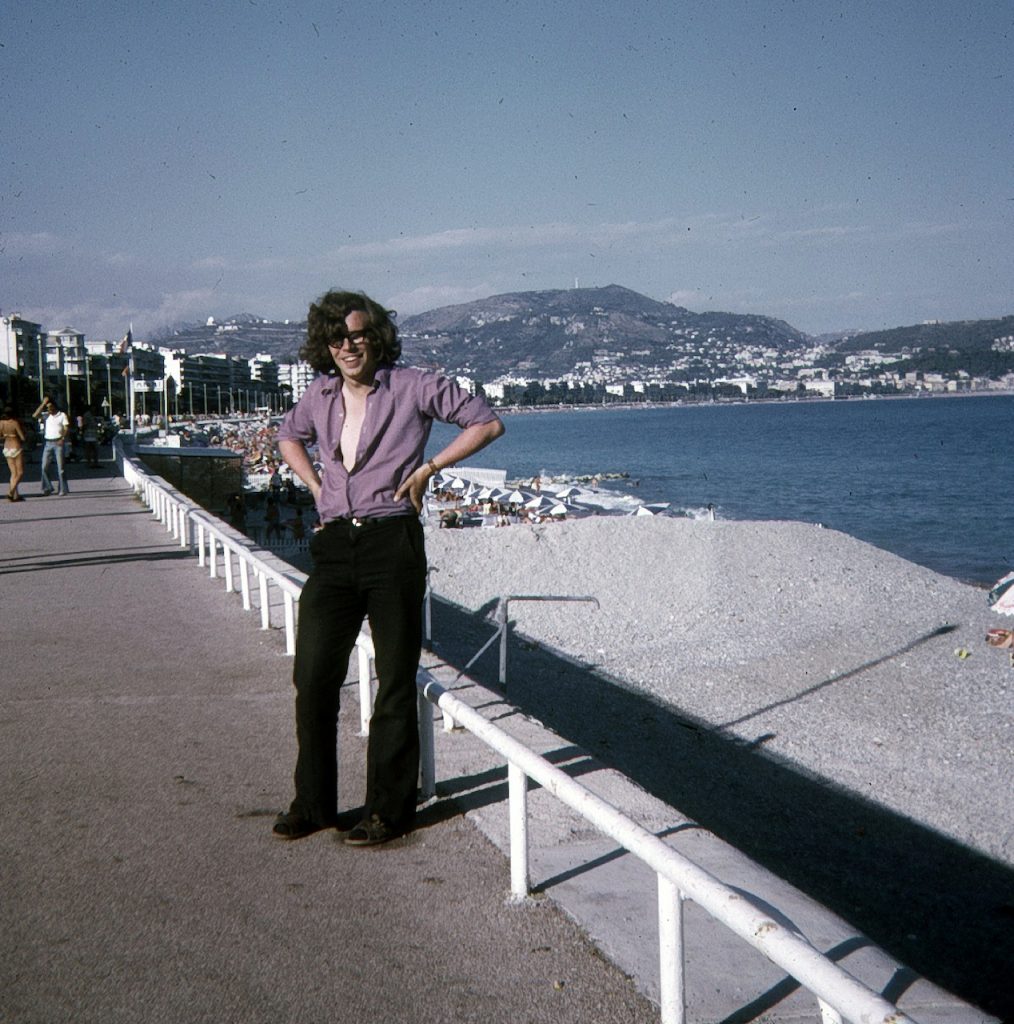
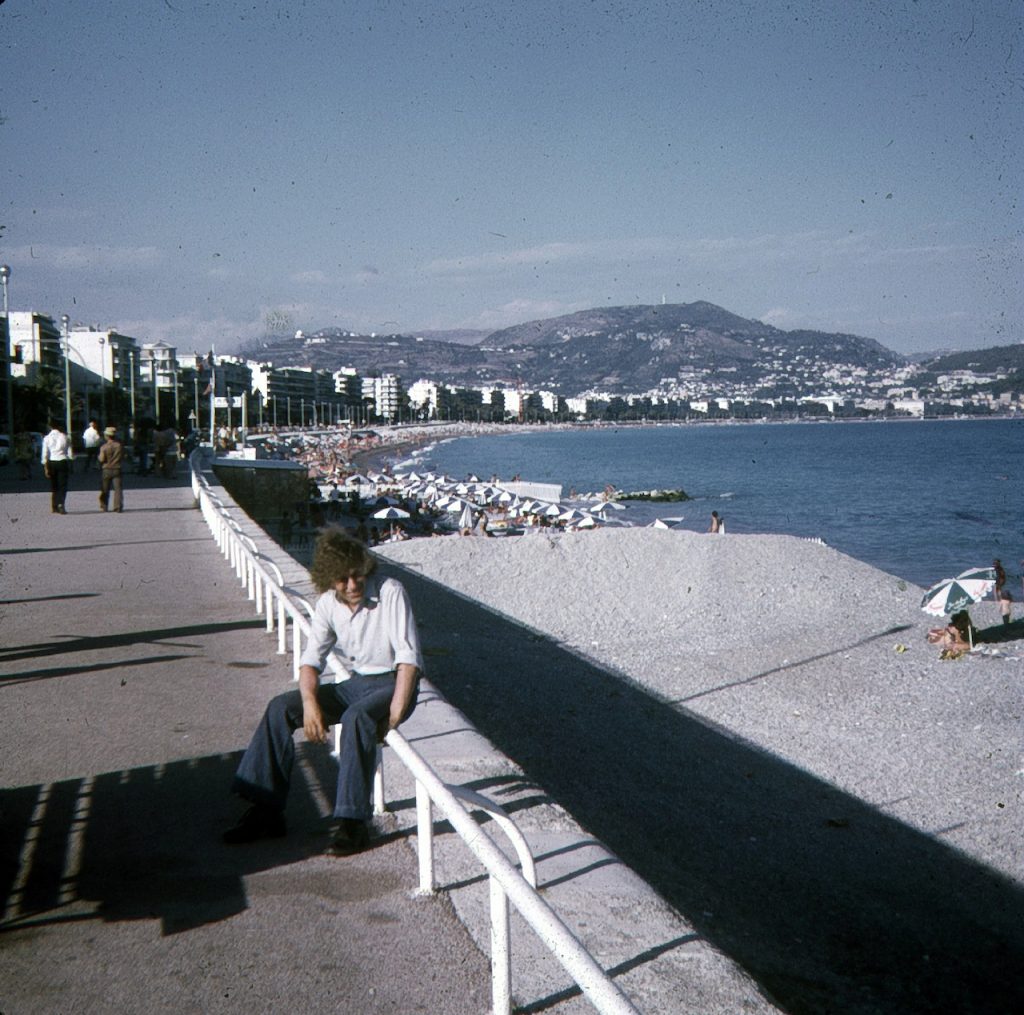
Those were the days of topless beaches and Brigit Bardot in St. Tropez so of course we had to stop and take a look – we saw neither. Our next stop was in Nice and we chose to sleep in the car because it had been a long day, we did not want to pay international jet-set prices for hotels and searching for a campground felt like a chore. Of course, on the following day, we stopped to take a look at Monte Carlo on the way and no we did not visit the Casino – far to classy for us. Nor did we see Grace Kelly in her Sunbeam Alpine.
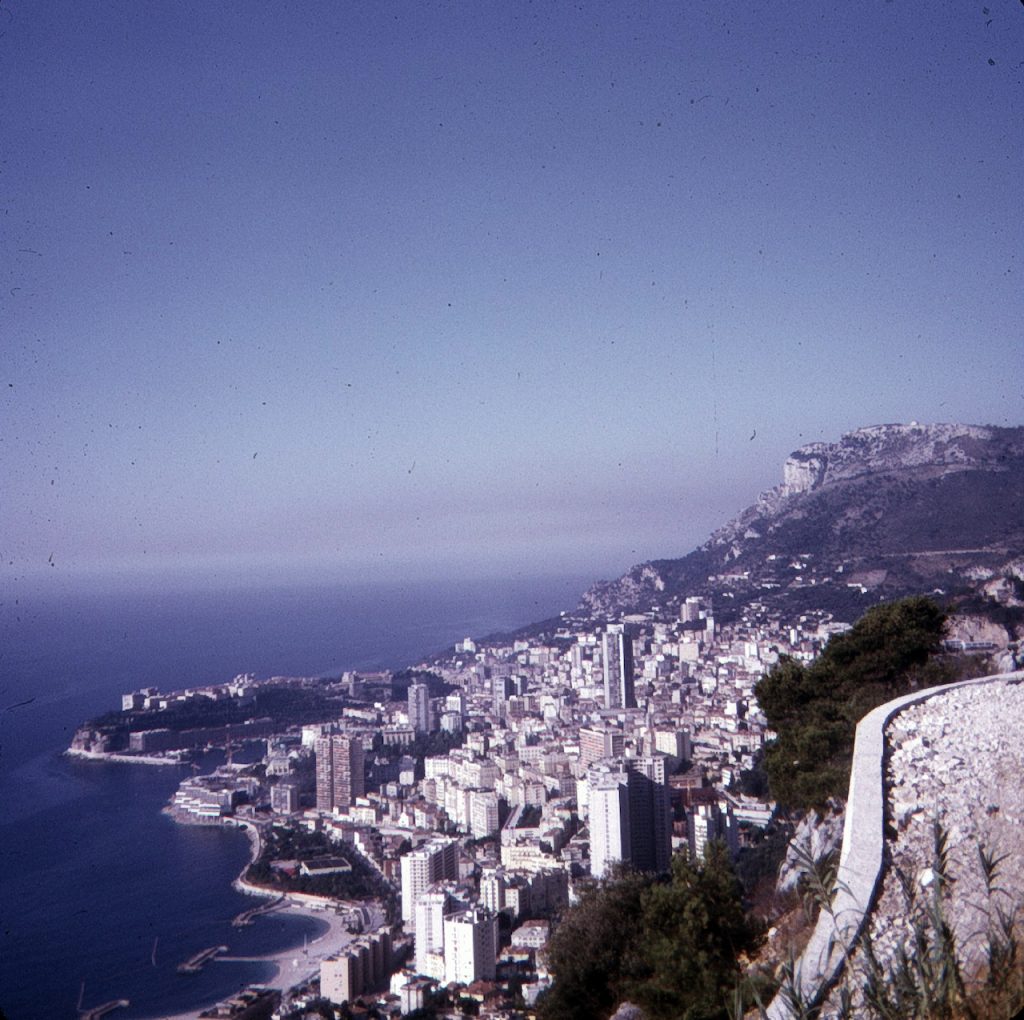
The next stage of the journey was over the border to Italy via Briançon. The old Ford was struggling up the winding roads over the pass, but it made the trip to our next stop just outside Turin (no we did not visit the Fiat factory). The car was a good friend indeed. I have few memories of this stopover other than a very nice campground and a first-class meal in the city. Then off through the spectacular Aosta Valley to the Grand St. Bernard pass to Switzerland. This was before the tunnel had been built and the Anglia really struggled over the 8100’ high route that dates back to the bronze age. There was no room for overtaking on this narrow winding road, so we had a train of much more powerful cars patiently following us.
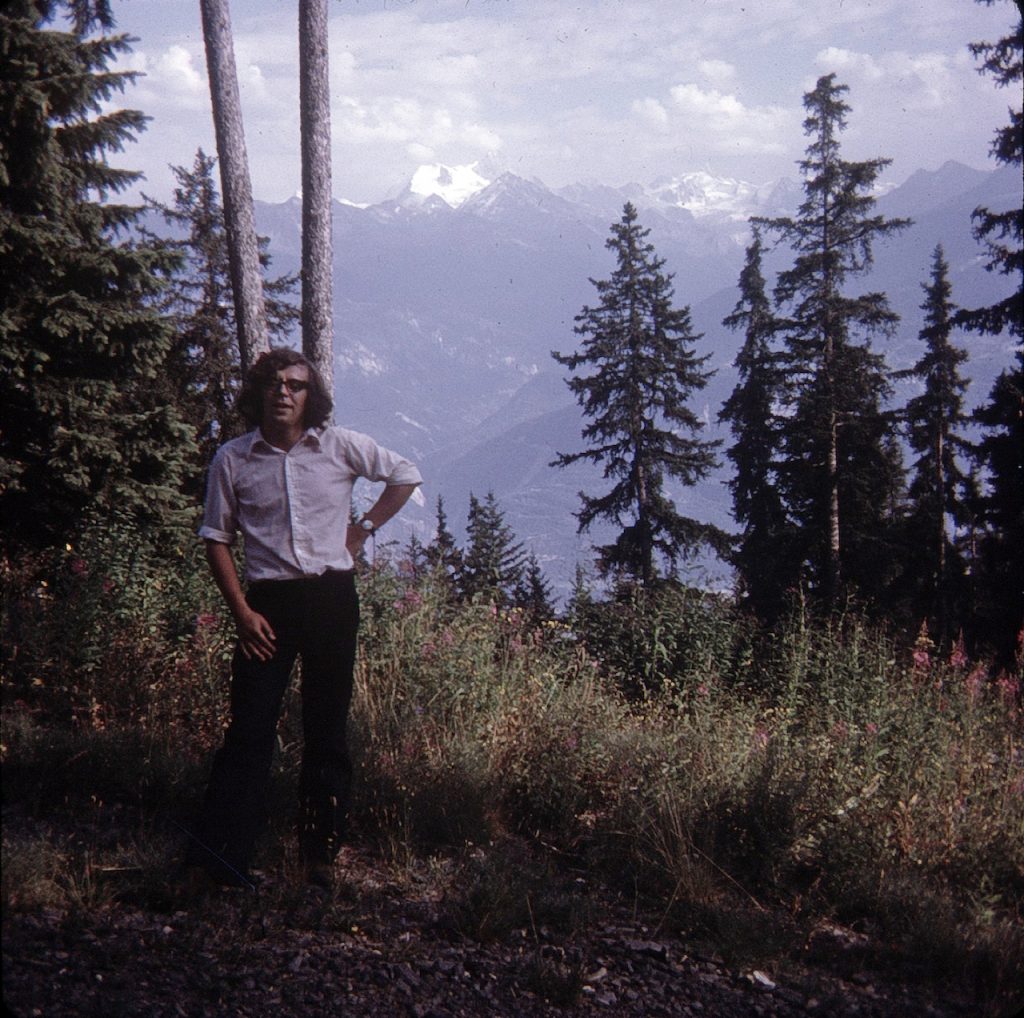
When we reached Crans, Sandra was very welcoming and looked after us for a few days including taking us on a hike, then we were off towards home through Northern France. I’m pretty sure that we camped for a night at or near Besançon, or maybe it was Amiens, but in general we just kept going because we had to be back for work on the following Monday. The most memorable event was near Reims when the dear old Anglia just stopped. It seemed to be an ignition problem. I looked in the distributor and thought “I wonder if it’s that capacitor”; there was one in the box of spare parts from my cousin – it worked! While we were there a sporty and wealthy sounding Englishman with his girlfriend in a Triumph Vitesse 6 (remember those cars?) with a GB plate stopped and offered us help, but by that time all was sorted out.
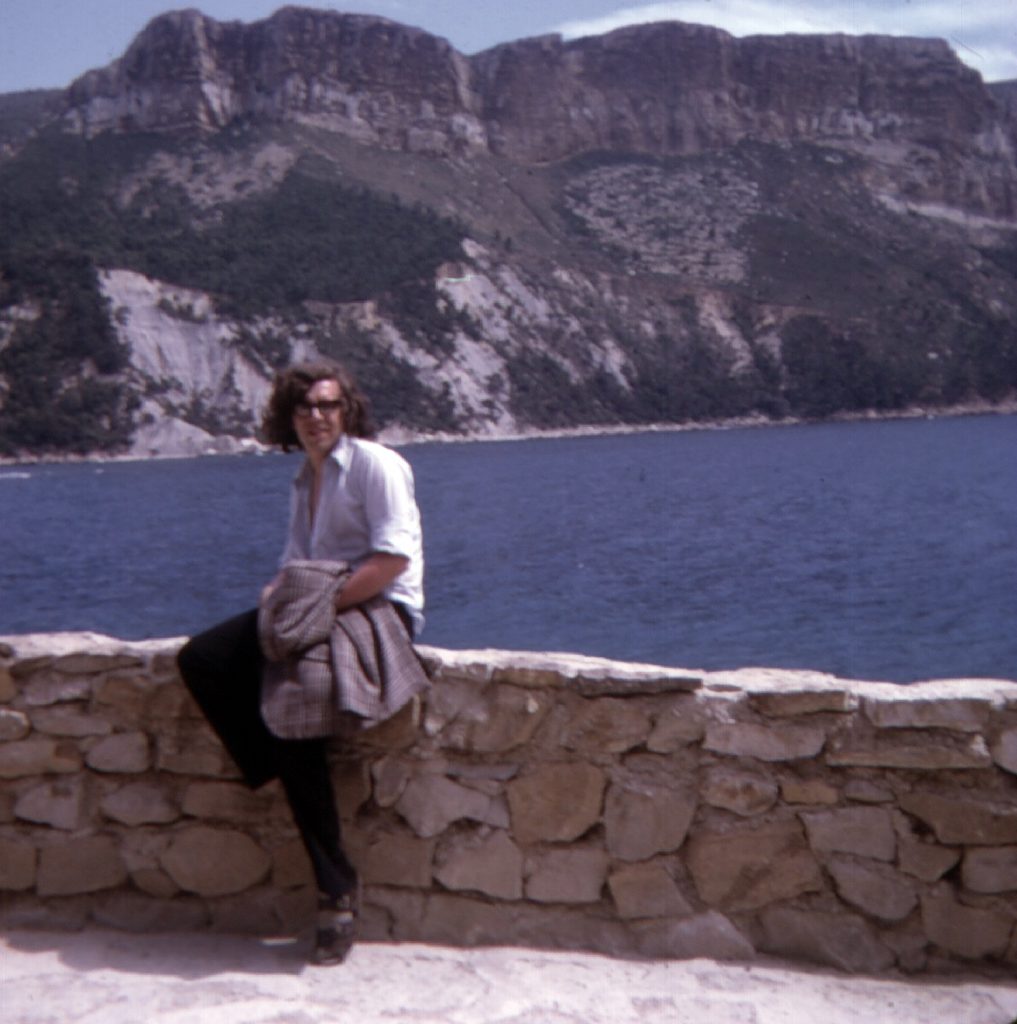
We arrived in Boulogne very early for our night ferry and we were just waved aboard the next boat that happened to be loading. This got us to Folkstone too late to consider driving any more that day and after taking Alex to London, I would have had to spend another 4-5 hours travelling back to Manchester, so we just stopped in a layby next to the A2 and slept in the car again. Sleeping in a car is never comfortable and the Anglia was no exception. This time we were wakened up by a police officer who told us to move on, so on we went, dropping Alex in west London and I had to continue another 200 miles home.
There’s a feeling in America that French people are standoffish to outsiders, but in my many visits there I have never seen this, all my memories of France are good, especially away from the tourist areas. On this trip Alex’s perfect French probably helped a lot, but I have been there many times since then and my impressions are still the same.
It had been a great adventure and as things turned out soon afterwards, I sold the Anglia to buy a brand new Mini. It was a sad day when my loyal first car left to a new home, but the new Mini was not falling apart! The Anglia was a great first car and I always remember it with affection.
